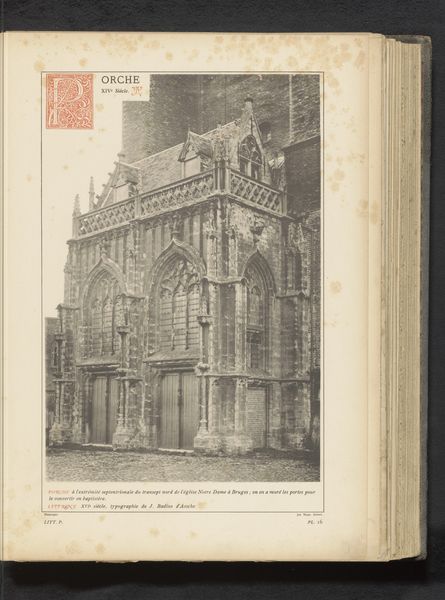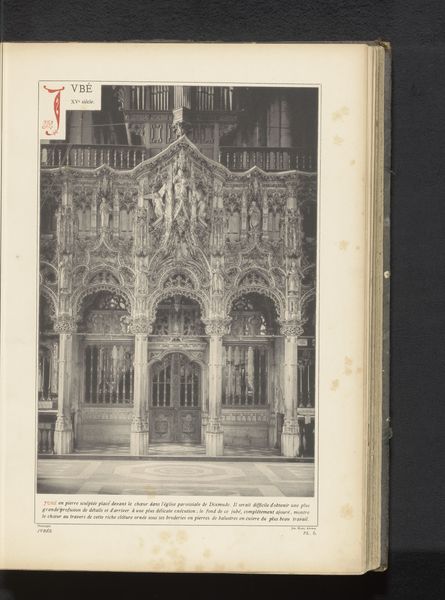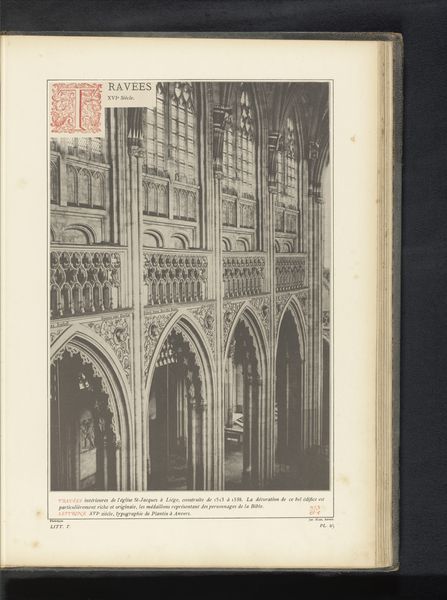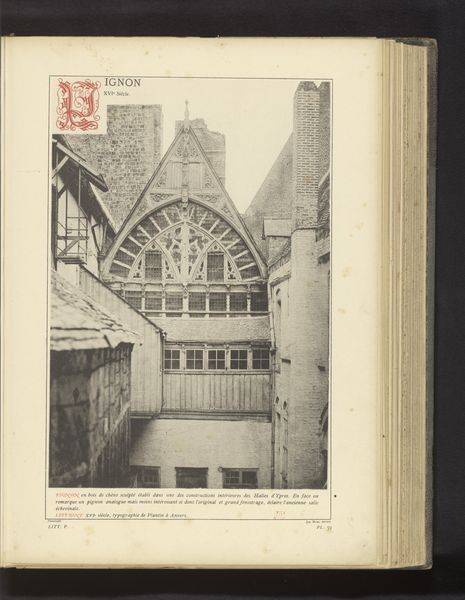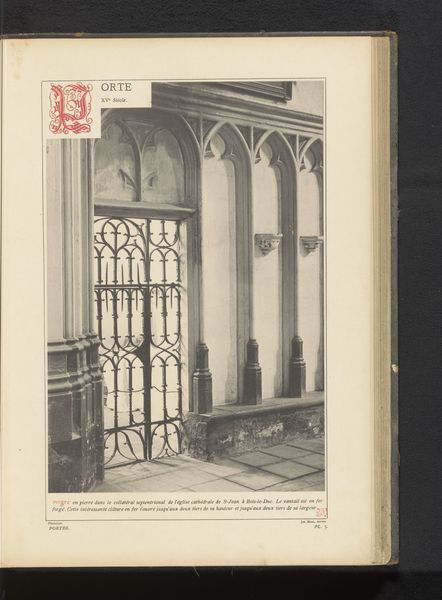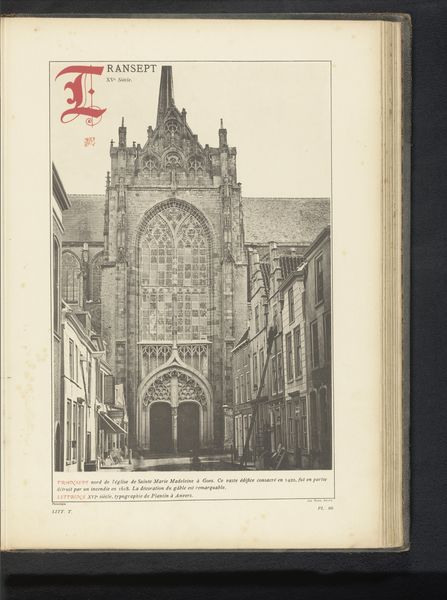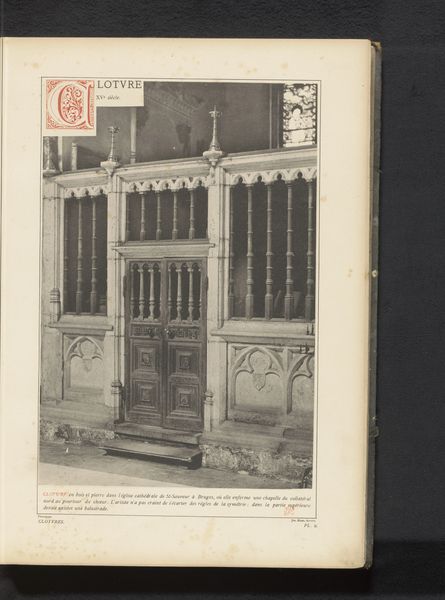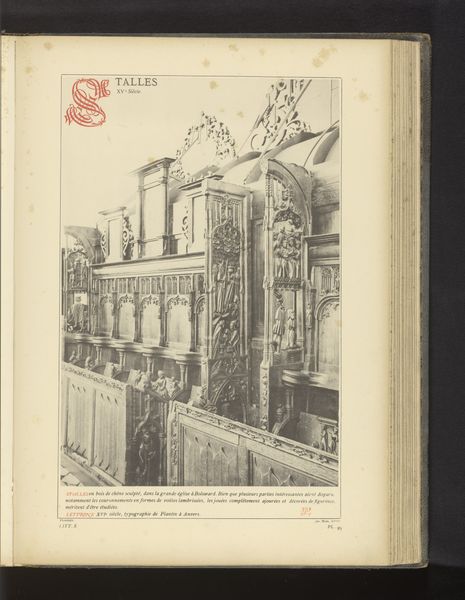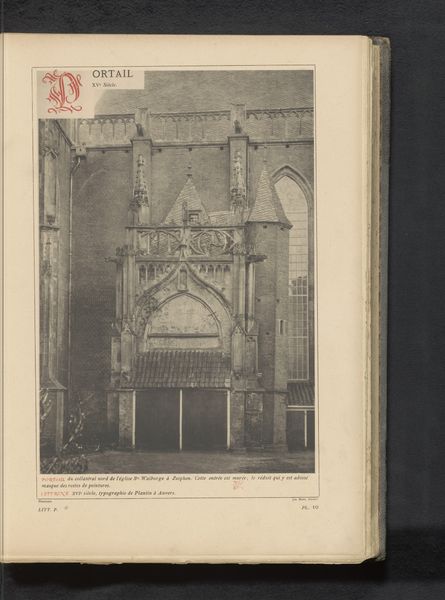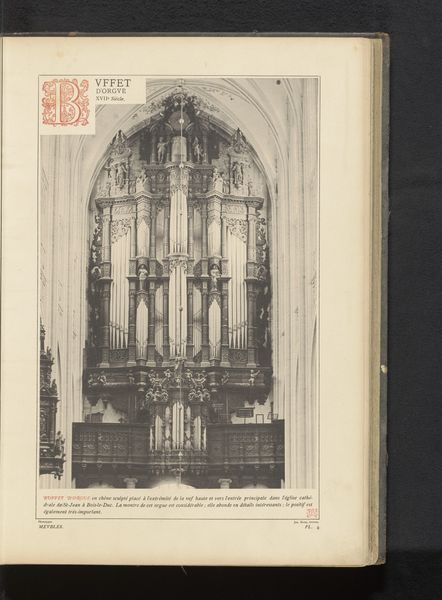
print, photography, architecture
#
medieval
# print
#
landscape
#
photography
#
architecture
#
realism
Dimensions: height 344 mm, width 233 mm
Copyright: Rijks Museum: Open Domain
Curator: The print before us, dating from before 1880, is entitled "Detail van de Sint-Maartenskerk te Ieper met bogen." It depicts Saint Martin's Church in Ypres, capturing a detailed view of its arches. Editor: It’s striking, almost unsettling, how the light seems trapped. The composition leads the eye relentlessly upward along those vertical arches, emphasizing height and… confinement, strangely. Curator: Indeed. Photography at this time served multiple functions. Besides aesthetic appreciation, such images were vital records of architectural achievements. This was a period deeply interested in cataloging and studying historical buildings, often with nationalist motivations. Editor: From a purely compositional stance, the photographer made some interesting choices, juxtaposing dense greenery against stark, imposing stone. This contrast almost destabilizes the church's mass. Note the photographer’s precise use of perspective and play of light—it creates dramatic visual depth within a relatively limited range of greys. Curator: Saint Martin's Church experienced considerable damage during World War I, which contextualizes the preservation drive reflected in similar photographs. These architectural prints are potent artifacts of cultural memory and wartime impact. Photography served as a tool for preserving representations of architecture but was itself affected by larger societal and military upheavals. Editor: It makes me wonder about the choices made during restoration. I wonder if that exact spatial interplay, that tension caught between stone and green, has been maintained. It reminds me that artistic intention lies both in construction, but also, surprisingly, in the very specific viewpoints chosen by photographers, historians, and all who follow after. Curator: It gives us pause to consider the role of cultural heritage in processes of healing and reconciliation following conflict. It underscores that seemingly straightforward photographs document deeper histories, reminding us of ongoing debates about monument preservation and architectural legacies. Editor: I'll look at old structures with different eyes.
Comments
No comments
Be the first to comment and join the conversation on the ultimate creative platform.


